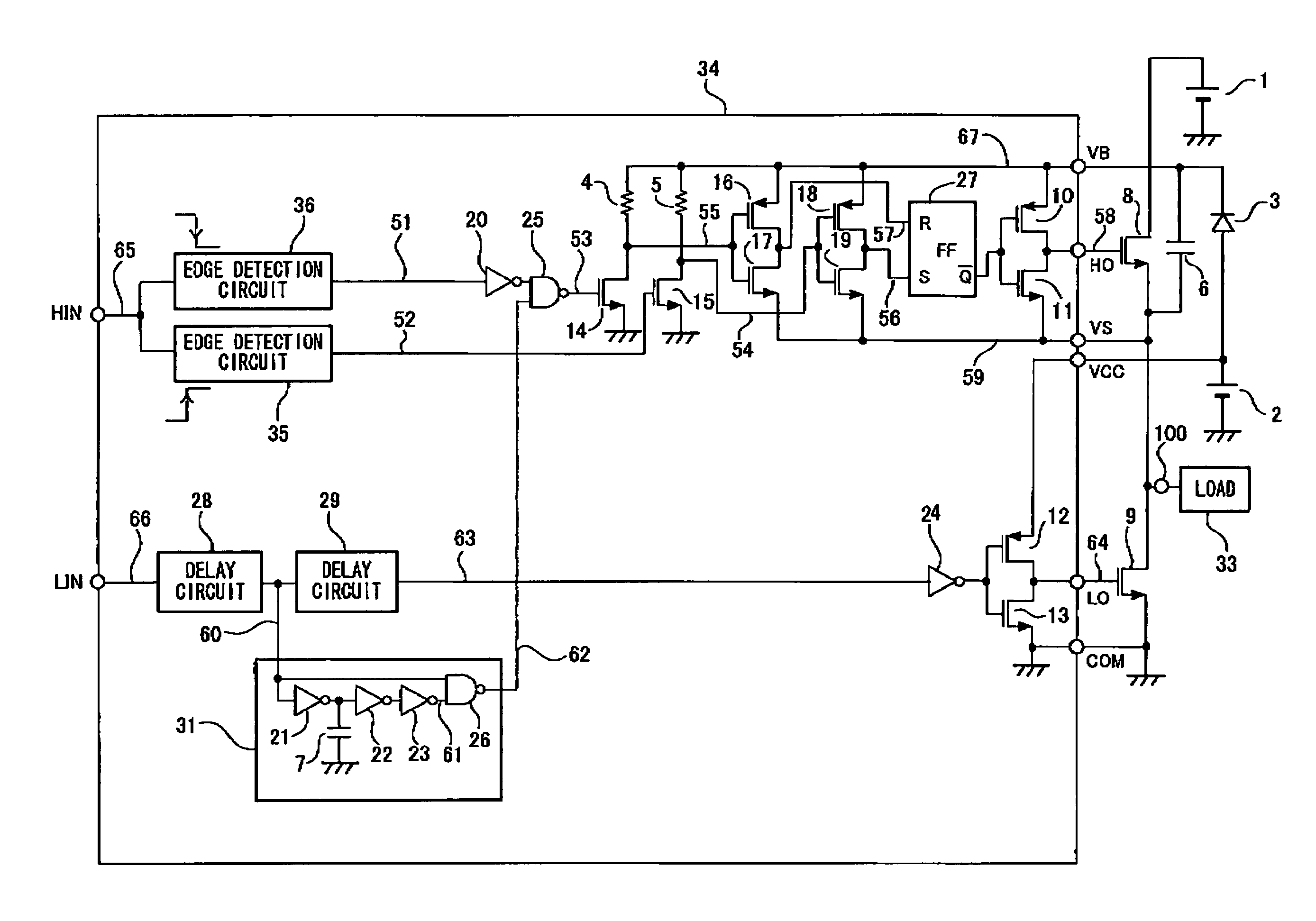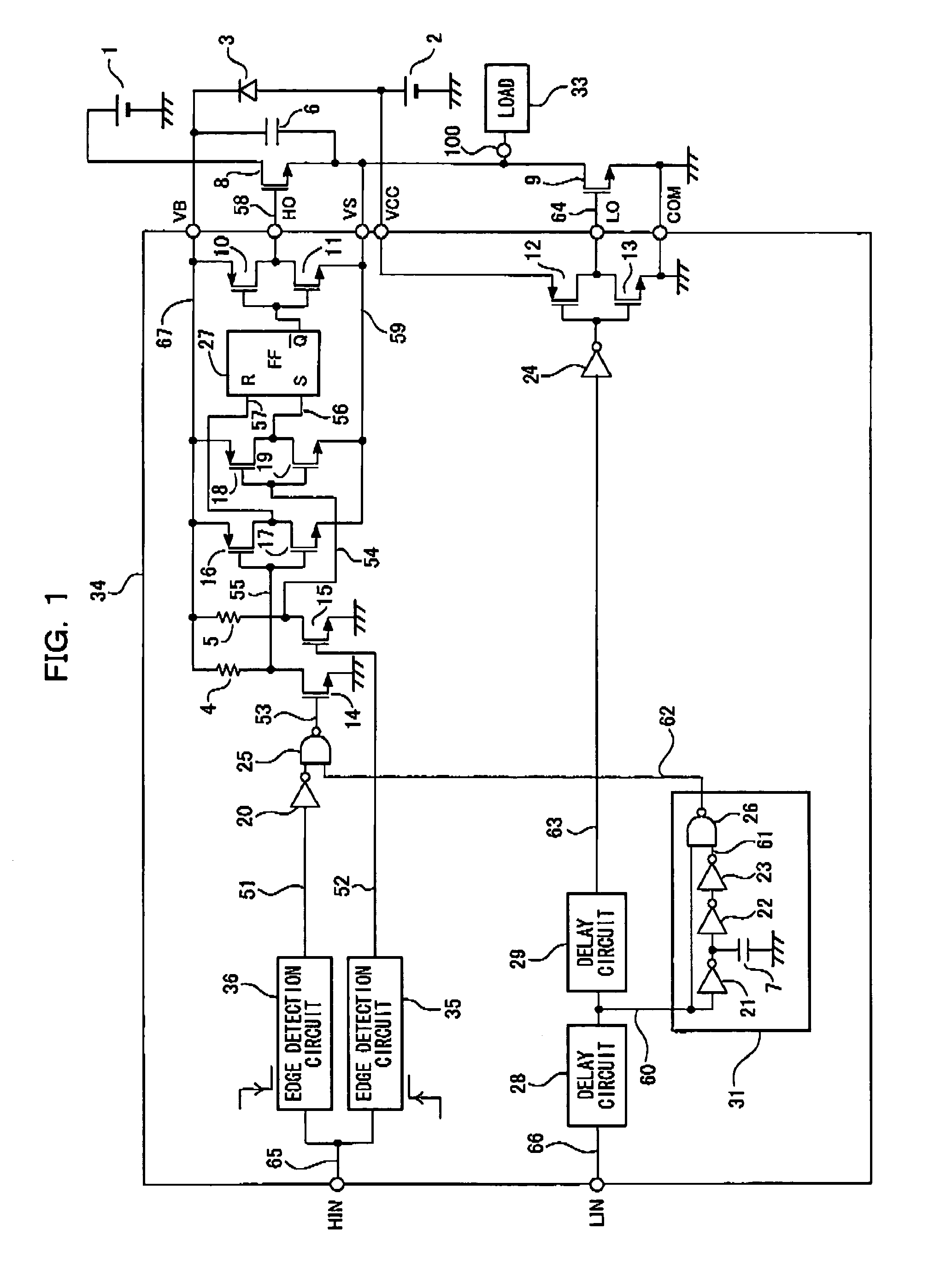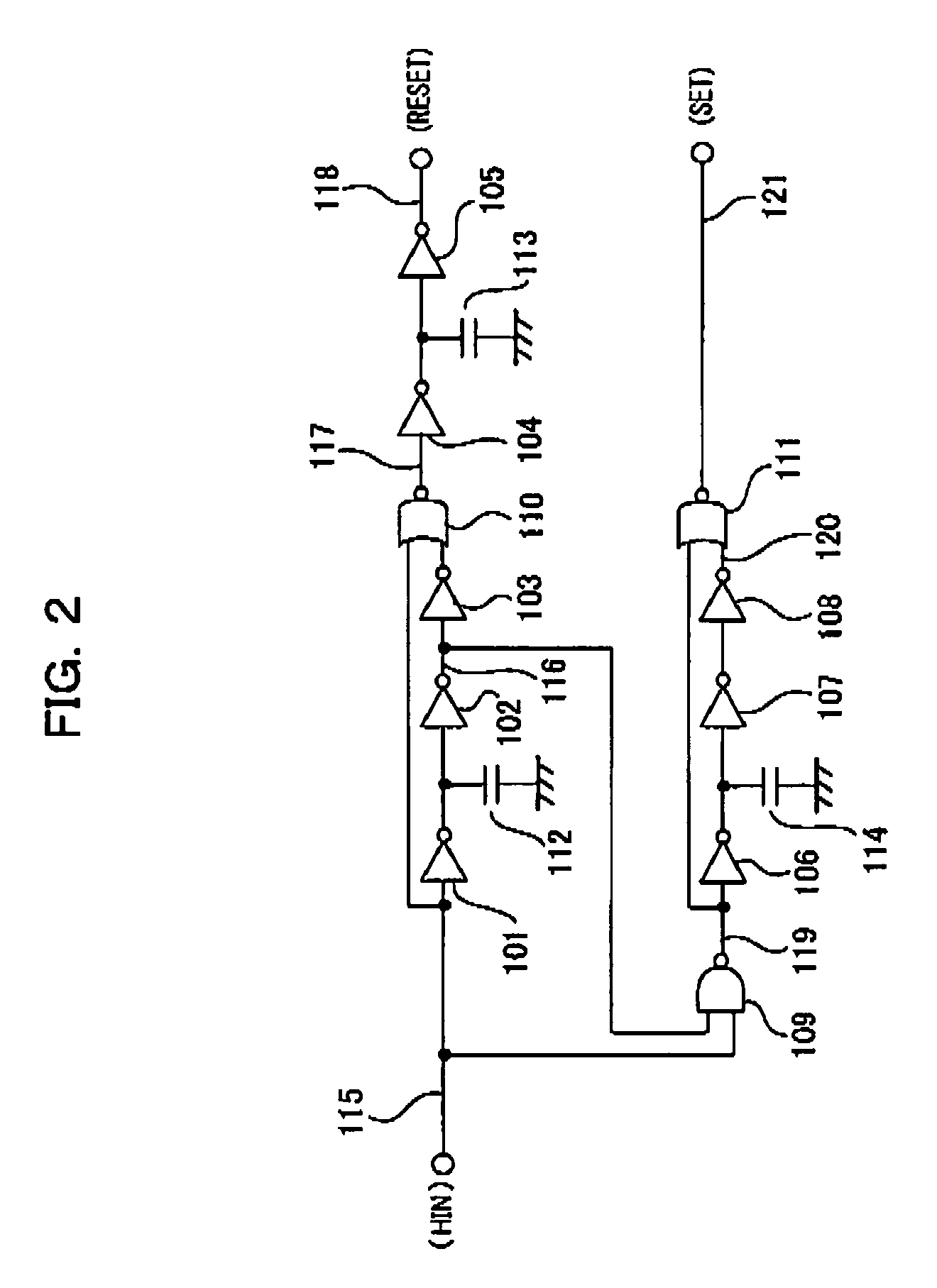Switching transistor driver circuit controlling power supply to the load
- Summary
- Abstract
- Description
- Claims
- Application Information
AI Technical Summary
Benefits of technology
Problems solved by technology
Method used
Image
Examples
embodiment 1
[0073]The following will describe a switching transistor driver circuit according to Embodiment 1 of the present invention.
[0074]FIG. 1 shows the switching transistor driver circuit of the present invention. Reference numeral 1 denotes a high voltage power supply, reference numeral 2 denotes a low voltage power supply, reference numeral 3 denotes a diode, reference numerals 4 and 5 denote resistors, reference numeral 6 and 7 denote capacitors, and reference numerals 8 and 9 denote power N-channel MOS transistors (hereinafter, will be referred to as transistors) serving as a pair of switching transistors connected in series. In this configuration, the transistor 8 on the high potential side is a high-side switching transistor and the transistor 9 on the low potential side is a low-side switching transistor. Reference numerals 10 and 12 denote output P-channel MOS transistors (hereinafter, will be referred to as transistors), reference numerals 11 and 13 denote output N-channel MOS tr...
embodiment 2
[0099]The following will describe a switching transistor driver circuit according to Embodiment 2 of the present invention.
[0100]FIG. 6 shows the switching transistor driver circuit of the present invention. Reference numeral 68 denotes a delay circuit obtained by combining the delay circuit 28 and the delay circuit 29 of FIG. 1, reference numeral 69 denotes a delay circuit having a low side input terminal LIN as an input and an output connected to the input of a reset pulse generation circuit 31, reference numerals 70 and 71 denote signal lines, and reference numeral 72 denotes a circuit included in a semiconductor integrated circuit. Other components are similar to those of FIG. 1.
[0101]In FIG. 1, a delay time from the low side input terminal LIN to the reset pulse generation circuit 31 is set by the delay circuit 28. FIG. 6 is different only in that the delay circuit 69 is additionally provided between the low side input terminal LIN and the reset pulse generation circuit 31. The...
embodiment 3
[0103]A switching transistor driver circuit according to Embodiment 3 of the present invention will now be described below.
[0104]FIG. 7 shows the switching transistor driver circuit of the present invention. Reference numeral 68 denotes a delay circuit obtained by combining the delay circuit 28 and the delay circuit 29 of FIG. 1, reference numeral 93 denotes a P-channel MOS transistor (hereinafter, will be referred to as a transistor), reference numeral 94 denotes an N-channel MOS transistor (hereinafter, will be referred to as a transistor), reference numeral 95 denotes a resistor, reference numeral 96 denotes a capacitor, reference numeral 97 denotes an inverter, reference numeral 99 denotes a delay circuit, reference numerals 74, 75, 76 and 77 denote signal lines, and reference numeral 78 denotes a circuit included in a semiconductor integrated circuit. Other components are similar to those of FIG. 1.
[0105]FIG. 8 is a timing chart for explaining the circuit operations of FIG. 7. ...
PUM
 Login to View More
Login to View More Abstract
Description
Claims
Application Information
 Login to View More
Login to View More - R&D
- Intellectual Property
- Life Sciences
- Materials
- Tech Scout
- Unparalleled Data Quality
- Higher Quality Content
- 60% Fewer Hallucinations
Browse by: Latest US Patents, China's latest patents, Technical Efficacy Thesaurus, Application Domain, Technology Topic, Popular Technical Reports.
© 2025 PatSnap. All rights reserved.Legal|Privacy policy|Modern Slavery Act Transparency Statement|Sitemap|About US| Contact US: help@patsnap.com



